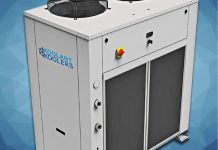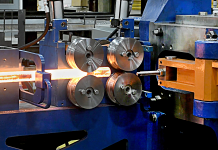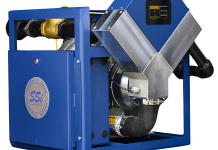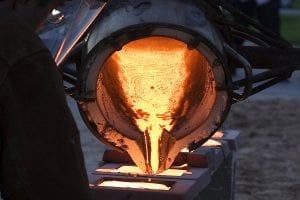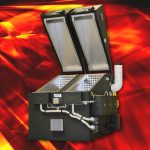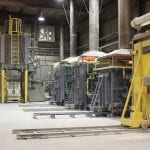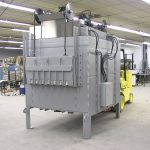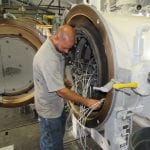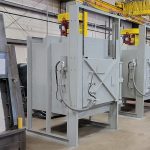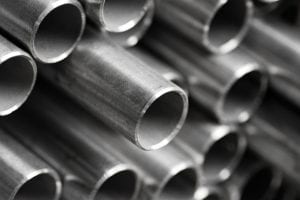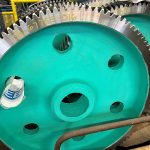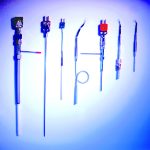Even though Can-Eng Furnace International Limited is a leading global designer and manufacturer of thermal processing equipment for ferrous and no-ferrous metal, the amount of knowledge and expertise the company offers goes far beyond that simple definition.
“We are a solutions provider,” said Tim Donofrio, vice president of sales and marketing for Can-Eng. “We’re not a standard furnace offering company. We invite opportunities that really allow us to demonstrate to our partners how we can set ourselves apart from others.”
Those opportunities have paved the way for a wide variety of products. Can-Eng offers high-volume, capacity, automated continuous, and batch industrial thermal processing, and heat-treating technology that includes aluminum automotive light-weighting, heat-treating systems; safety critical automotive fastener mesh belt heat-treatment systems; salt-quench austempering heat-treatment systems; plate, API tube, bar quench, and temper systems; steel plant heat processing and treatment systems; aluminum and steel forge and foundry heat processing and heat-treatment systems; and automotive, aerospace, oil and gas, and energy sector heat-processing and treatment systems.
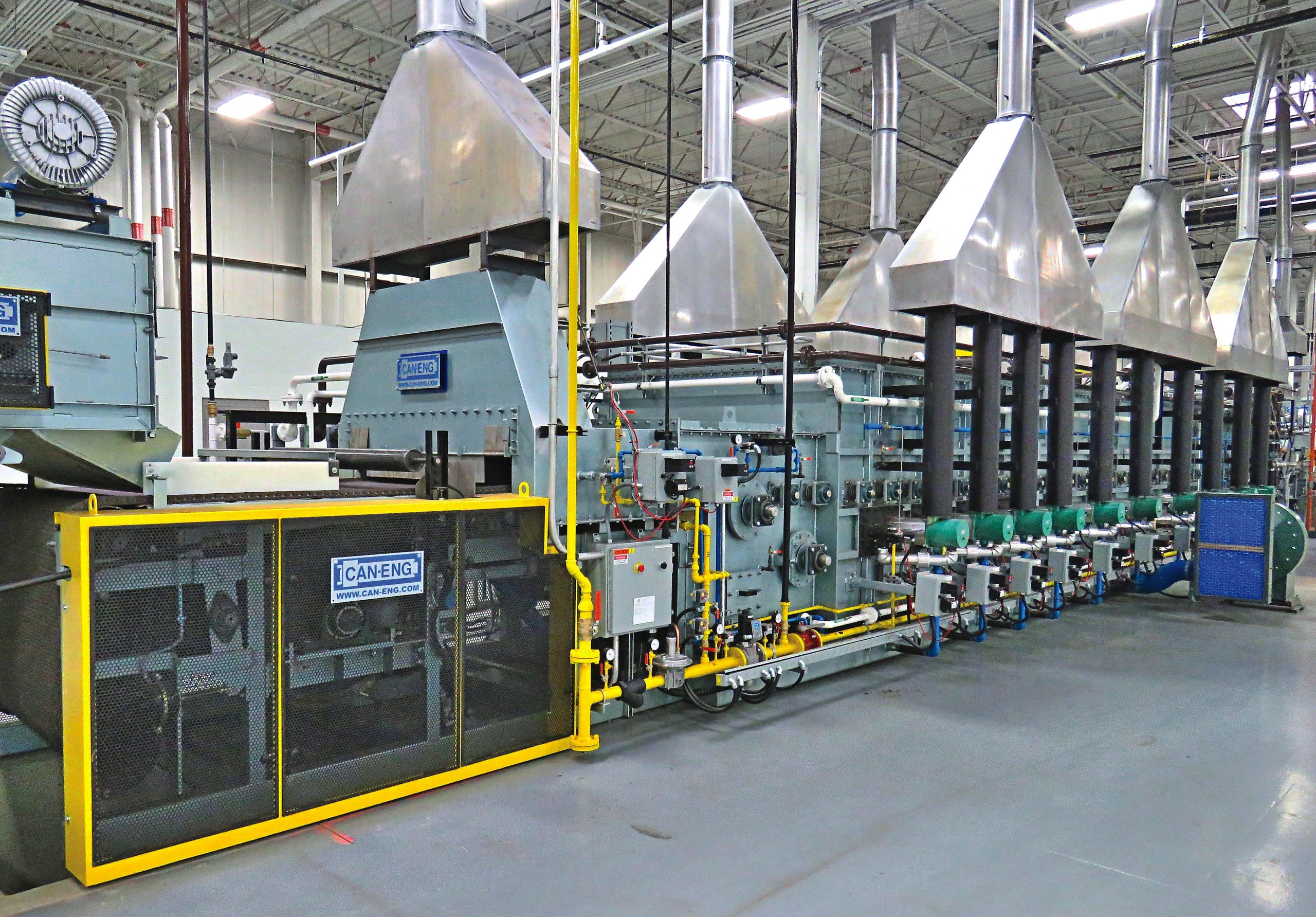
Equipment – Technology Focus
In a nutshell, Can-Eng focuses on niche areas of the thermal-processing market by focusing on three main product groups: high-volume, high-capacity, special quality fastener heat-treatment systems; light-weighting technology for the automotive and mobility markets; and custom-engineered special projects, according to Donofrio.
“Certainly, Can-Eng is well known for delivering very high-value-added heat-treatment production capacity through our mesh belt heat-treatment systems,” he said.
Can-Eng has the largest mesh belt soft handling heat treatment system available to the market at 7,000-pounds-per-hour production capacity, according to Donofrio. Systems integration proven part mixing and part damages prevention features while also ensuring predictable mechanical properties are achieved for high-quality fasteners used in the automotive or the mobility market. While always focusing on technology development, Can-Eng has recently integrated continuous, inline phosphate removal systems as well as improved tempering furnace uniformity capability for the processing of high-strength fasteners.
“Can-Eng has enjoyed the opportunity to work with most major high-quality fastener manufacturers globally, allowing the Can-Eng nameplate to be easily distinguished at manufacturers around the world,” he said. “Can-Eng is recognized as a systems integrator and not just a furnace builder. This is demonstrated through the integration of automated parts handling, product monitoring, automated guided vehicle (AGV) systems and robotic handling solutions that provide single part, lean manufacturing part flow, which has been applied to our Basketless Heat Treatment Systems (BHTS®).”
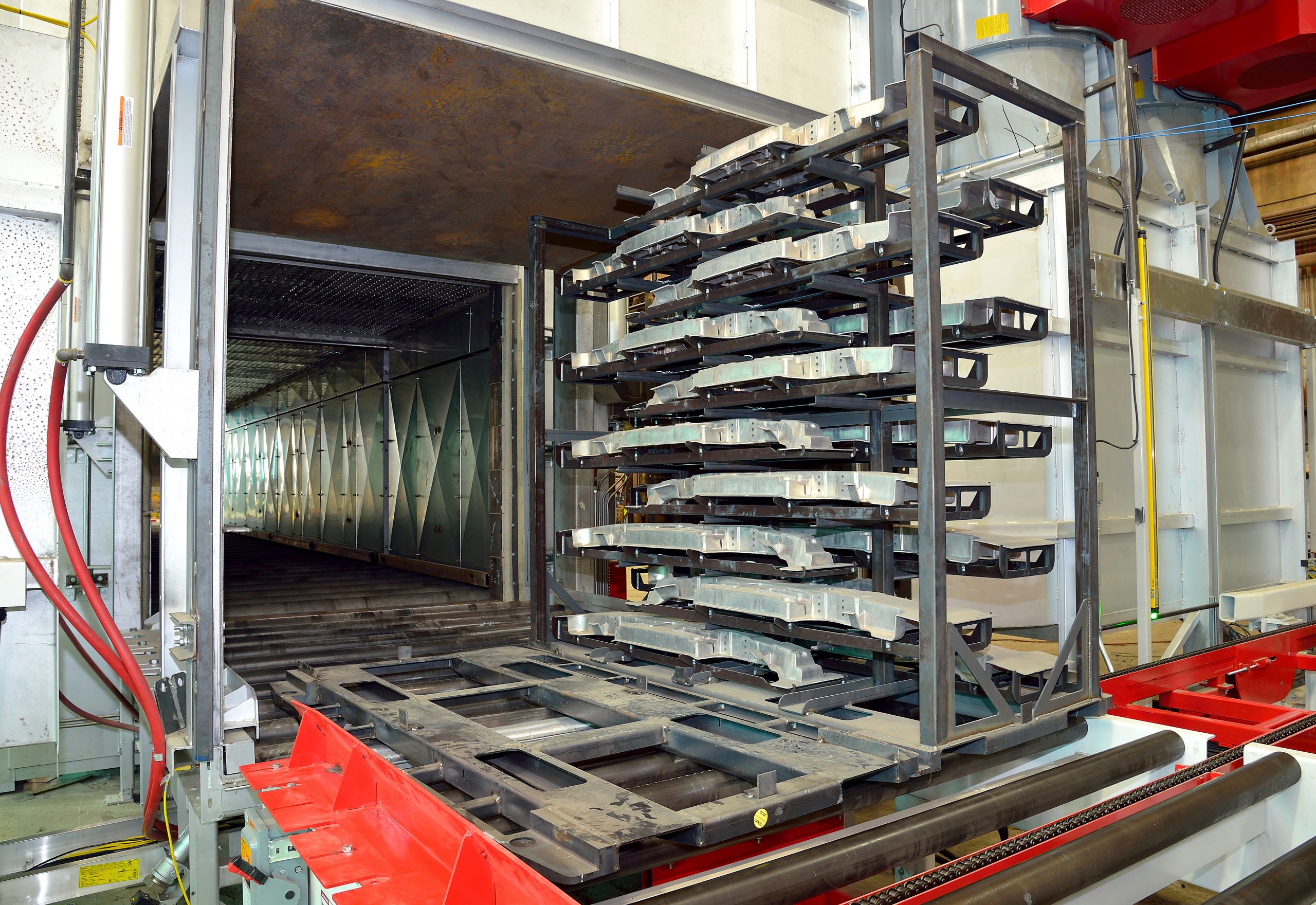
Light-Weighting Technology
Can-Eng’s aluminum heat-treatment systems allow the company to focus on light-weighting technology, according to Donofrio.
“Our aluminum heat-treatment systems have been very successful the last 25 years,” he said. “And, more recently, we’ve been quite successful in developing state-of-the-art high-volume capacity systems that are used for heat treating very specialized, thin-walled, high-integrity castings.”
These thin-walled castings are used as part of the structural frame, suspension, BIW, or battery housings, for example, according to Donofrio. These are products that require predictable metallurgical properties, but they also require a very uniform thermal process to ensure the dimensional stability of their products for final installation.
“When you’re processing very thin-walled, three-millimeter-thick sections, they are quite prone to residual stresses and distortion potential as a result of non-uniform treatment,” he said. “With our very specialized state-of-the-art systems, Can-Eng achieves very uniform heating, as well as quenching processes. As part of that, we’ve developed a very unique Precision Air Quench (PAQ™) system that’s been used and integrated into over 20 aluminum heat-treatment systems.”
These heat-treatment systems are used by tier-one and tier-two direct automotive manufacturers around the world, according to Donofrio.
“We have well over 50 installations in this market, making it a large part of our focus and business,” he said. “This includes more conventional, continuous roller hearth and belt conveyor systems for aluminum forging and casting applications, as well as modular aluminum heat-treatment systems. We see greater requirements for modular heat-treatment systems where significant flexibility for product geometry is required, processing a wide range of processing parameters providing manufacturers the ability to be nimble and react quickly to changes in demand.”
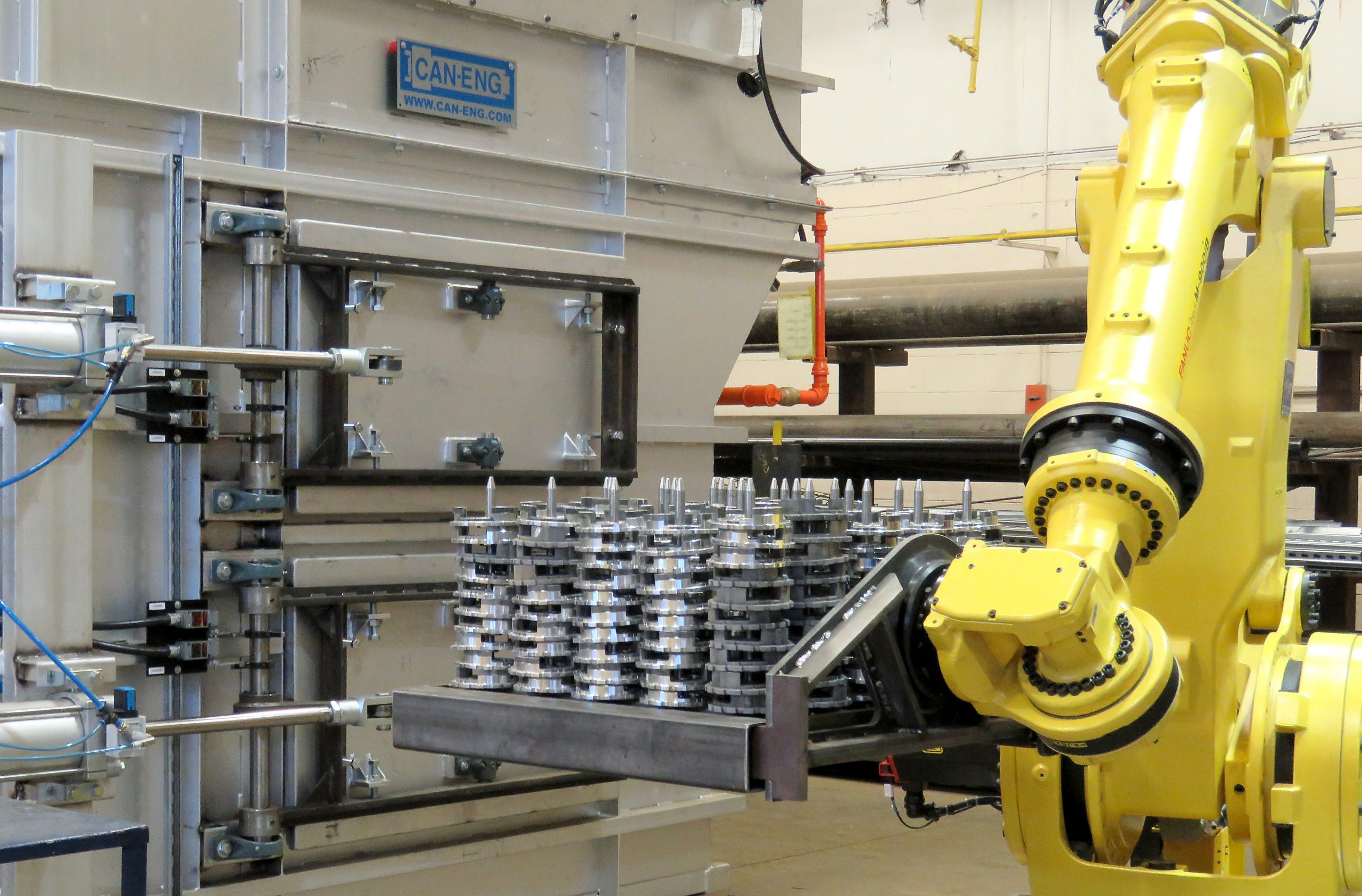
Custom Solutions
The final area of expertise Can-Eng provides is the company’s ability to offer custom-engineered solutions, where the answer begins with a blank piece of paper, according to Donofrio.
“We evaluate the customer’s expectations and drill down in understanding their needs, some of which are hidden needs; the needs that they don’t even realize they have,” he said. “It is with this understanding and extraction of needs where we can develop a customized solution that will deliver to them the lowest cost of ownership in implementing a Can-Eng solution.”
This might involve a very large steel application, according to Donofrio. An example of this is recent increasing forging demands from the marketplace for isothermal annealing and normalizing systems for the various new multispeed transmissions and drive-unit requirements for the up-and-coming electric vehicle market. These systems requirements could integrate anything from roller hearth, conveyor, rotary hearth, screw hearth, walking beam, or car bottom systems that use automated guided vehicles (AGV).
“We have many different tools available as well as different types of furnace concepts where we can apply our know-how,” he said. “And not only that, we can bring a specialized talent that we have with automation.”
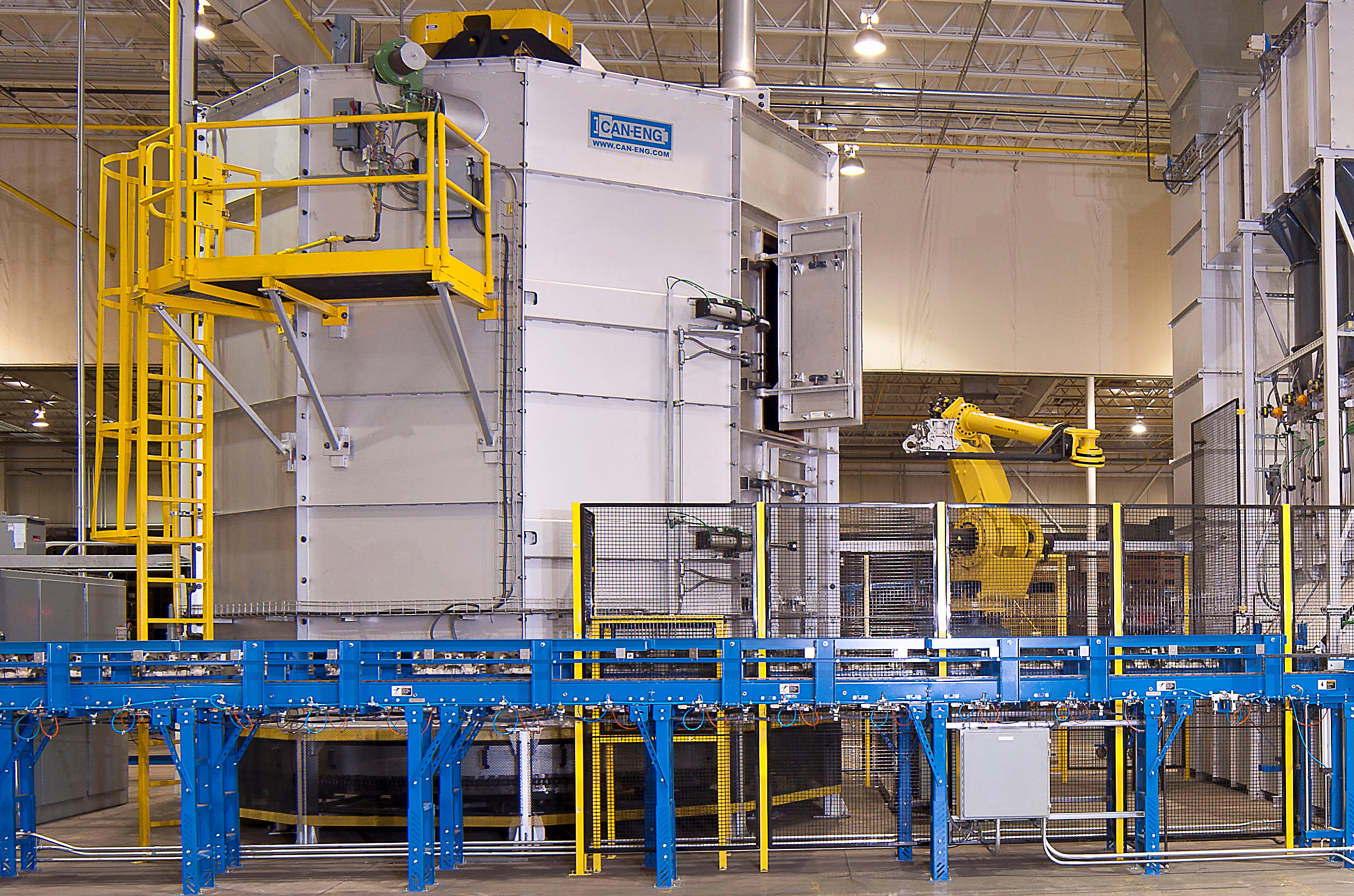
Advances in Automation
For the past 15 years, Can-Eng has been integrating robotic handling in its aluminum heat-treat systems, according to Donofrio.
“We do have a very specialized system concept that we call our Basketless Heat Treatment System (BHTS®),” he said. “What we’re doing in that application is essentially providing a continuous thermal process for aluminum components, whether they be forgings or castings, and handling these components through a step-by-step heat-treatment system without the use of any baskets or fixtures.”
Donofrio pointed out that what this brings to the table is a tremendous energy reduction and energy savings that shows up in the overall operating costs of the system, as a result of there no longer being a need for continuously heating and cooling baskets, trays, and fixtures, while also eliminating the ongoing capital and repair costs of those fixtures that are constantly being degraded due to constant thermal deterioration. Beyond that, customers will see a considerable improvement in product-quality performance.
“As a result of individually handling a part, you do not see the mass effect that you would normally see when you would process a number of parts in a fixture or a basket — resulting in a much tighter temperature control and mechanical performance range,” he said.
Research & Development
With Can-Eng’s ability to offer custom solutions, the company has a capable R&D facility where it can run and develop thermal processes well ahead of production demands, according to Donofrio.
“We’ve done that work for many different customers over the years, and we’ve supported quite significant product launches,” he said. “In the early days, when the aluminum engine blocks with cast and iron liners were being developed, we supported that, but also when the recent all-aluminum truck was introduced, we supported that as well with development work they required to achieve the mechanical property and dimensional stability requirements that were otherwise not achievable with conventional processes.”
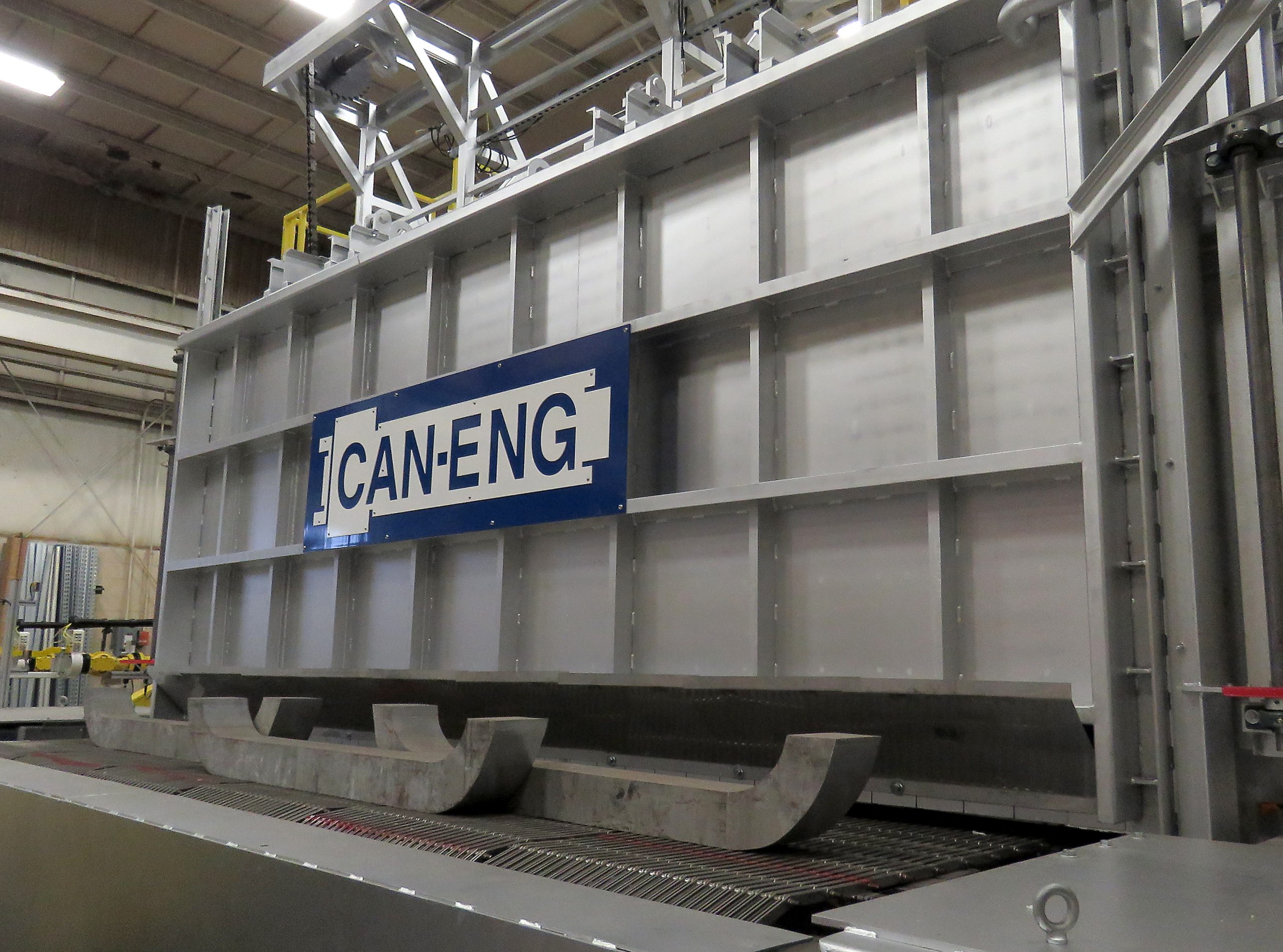
Heat treating for 56 years
Can-Eng opened its doors in 1964, and for almost 60 years, the company’s designs have served commercial and captive heat-treaters, stamping and fastener companies, automotive component producers, the iron and steel industries, aluminum foundries, agricultural, construction, and appliance manufacturers, gaining an international reputation for design innovation, quality workmanship, and a dedication to service, according to Donofrio.
“We’ve done business in 17 different countries around the world,” he said. “A lot of people out there don’t really recognize that we are that engaged and that we have support and service capability globally to provide those services.”
As Can-Eng has expanded through the decades, it has added a lot of innovative equipment to the heat-treating industry, not the least of which is the company’s ability to provide development processing for light-weighting automotive structures, according to Donofrio.
“Can-Eng was the first industrial furnace manufacturer in North America to develop a high-integrity, structural-casting, heat-treatment system to be used for high volume processing for light-weighting automotive structures,” he said.
Continued Innovation
Moving into its next decade and beyond, Donofrio said Can-Eng will continue to push the envelope of heat-treating.
“Heat treating is constantly evolving,” he said. “We try to stay very close to the technologies that are being developed well before they’re needed. I think that is one of the things that we appreciate as having an R&D facility where we can work with customers that are developing these new processes and new products, so that we’re ready long before they even come to the marketplace. With the mobility markets and the needs of electrified vehicles, we’re certainly plugged into those areas and appreciate the battery technology needs within the thermal industry.”
To that end, Can-Eng will continue to offer innovative heat-treating solutions to key areas of the thermal-processing market, and if that means being a bit selective, that’s only because Donofrio emphasized it’s the best way to serve the industry.
“We don’t want to be everything to everybody,” he said. “We have a very talented group of engineers here, and we like to use their talents in very specific and strategic ways.”
MORE INFO www.can-eng.com









